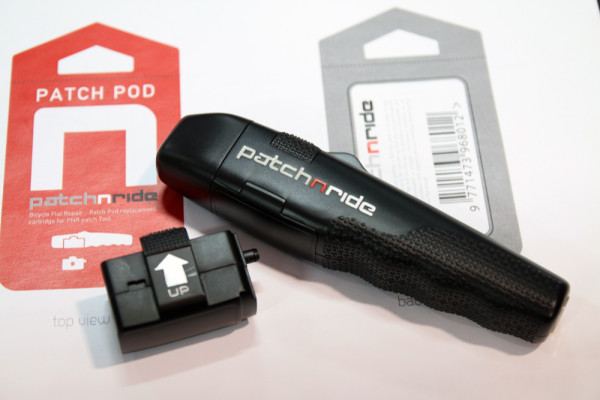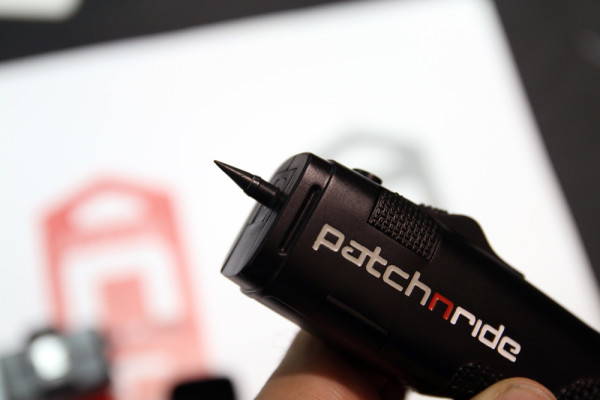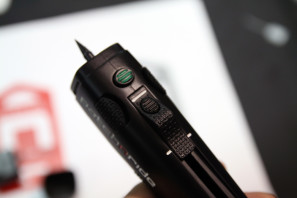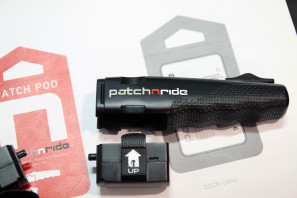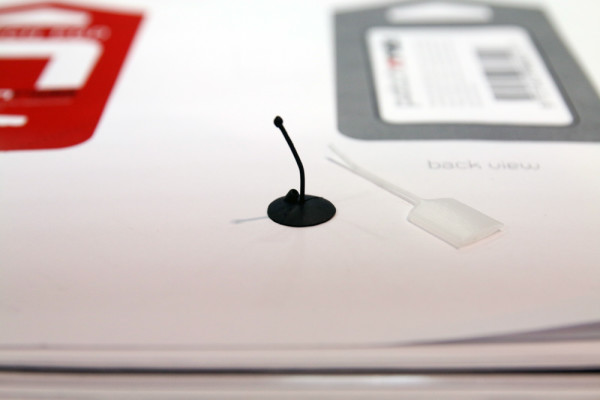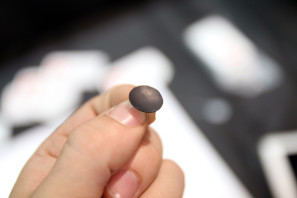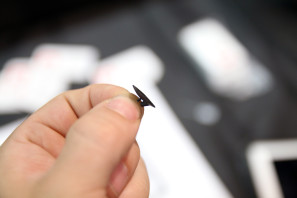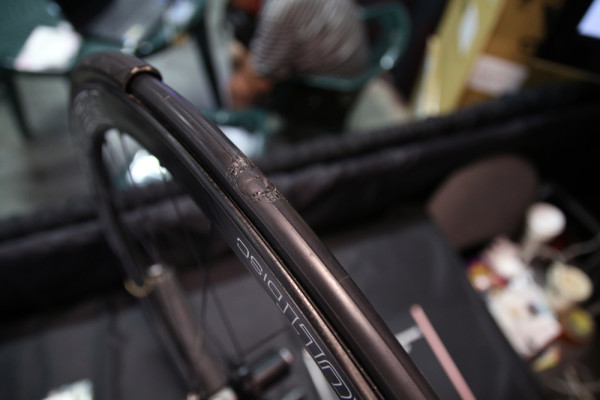We first caught wind of the PatchNRide system back in June when the company first announced that they were taking pre-orders with video featuring some high production value but not a lot of answers to how the system actually works. It turns out that was on purpose, since the company didn’t want to reveal all the details until the system was completely ready and the patent applications were all sorted out. Now a few months later, PatchNride was on hand at Interbike showing exactly how the system works and just how easy it is.
From what we’ve seen, PatchNride will be a game changer, especially for the world of tubulars. Seal up the details, next…
The entire PatchNride system is not exactly tiny, but it is still smaller than bottles of emergency tire sealant that many triathletes or tubular riders will carry and will easily fit in a jersey pocket or larger saddle bags. The patch repair stick uses replaceable cartridges that load into the front of the handle. After the cartridge is installed and you’re ready to fix a flat, you slide the lever forward on handle exposing the barb. This barb is designed to be sharp enough to clean out the puncture (the offending nail/thorn/metal should already be removed), but not sharp enough to damage the inner tube. PatchNride makes finding the source of the flat easy with their leak finder which is basically like a moist towelette that you rub around the tire. The residue left bubbles up where the puncture is located making the source easy to find.
Once inserted into the tire, the green button will squirt in adhesive from the clear packet in the cartridge, and then insert the patch upon removal. The patch is 40mm wide and concave to perfectly form to the tube and is capable of sealing holes in the inner tube up to 3mm in diameter. Since the tube is anchored by the valve to the rim, PatchNride claims the tube can’t move enough for the patch to miss its mark.
After the patch is inserted, it leaves a small tether which is used to pull on to properly set the patch before inflating the inner tube. This tether indicates that the patch has been inserted and also it is properly set. Once the tube is inflated and the glue has cured the tether can be cut off or simply pulled off.
How durable are the patches? PatchNride have done extensive testing of the system which resulted in examples like the tire above. As an actual flat, received in normal riding, the flat was repaired with the PatchNride system and then ridden another 4500 miles before becoming a display at the show. The crew admits that there may be some excess glue that will bind the tube to the tire, but it isn’t detrimental to the life span of either, and in the case of clinchers the tube can be easily separated from the tire after the ride.
PatchNride will be filling their pre-orders by the end of the year, and will start shipping for standard retail in January/February. Each PatchNride system will retail for $34.99 which includes a single patch pod and one leak finder. Replacements patch pods will sell for $12 each. Compared to a patch kit and a pair of tire levers the system isn’t exactly cheap, but for those uncomfortable with removing wheels and tires to fix a flat or tubular riders, the PatchNride could prove invaluable.
Interested? The PatchNride system is still available for pre-order for another 21 days. Your $30 will get you a PatchNride too, 2 patch pods, and 2 leak detectors.
